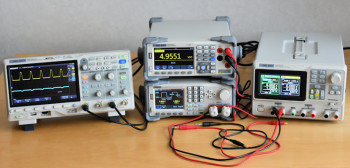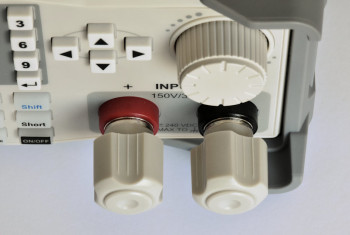Review: Siglent SDL1020X Programmable DC Electronic Load
Practical use

After trying out some simple things, I started reading the manual anyway, because the number of settings is huge. So far I have only mentioned a part. Through the manual I also found out that the two monitor outputs at the back need to be activated in a submenu before they provide measurement signals. Unfortunately, this setting is reset when the device is switched off and must be reactivated the next time.
I also discovered that the maximum steepness of the edges in the dynamic test mode depends on the selected current range. This is because in the 30-A range it is 2.5 A/µs, in the 5-A range only 0.5 A/µs.

Apart from these trifles (which can probably be adjusted with a firmware update), the SDL1020X-E is a fine device to work with, with the quality we have come to expect from Siglent. It is also possible to control the electronic load via your PC, but this is currently only possible via SCPI commands or a LabView driver. Siglent still seems to be working on a Windows program, but it is not known when that will be available.
Conclusion
If you frequently need an electronic load for testing power supplies or batteries, a device such as the SDL1020X-E is an ideal addition to your lab instruments. It offers almost all the testing options you can think of. The clear display shows all the necessary information and makes connecting a separate oscilloscope or multimeter unnecessary in many cases. This is a well thought-out instrument at an affordable price!Read full article
Hide full article


Discussion (0 comments)